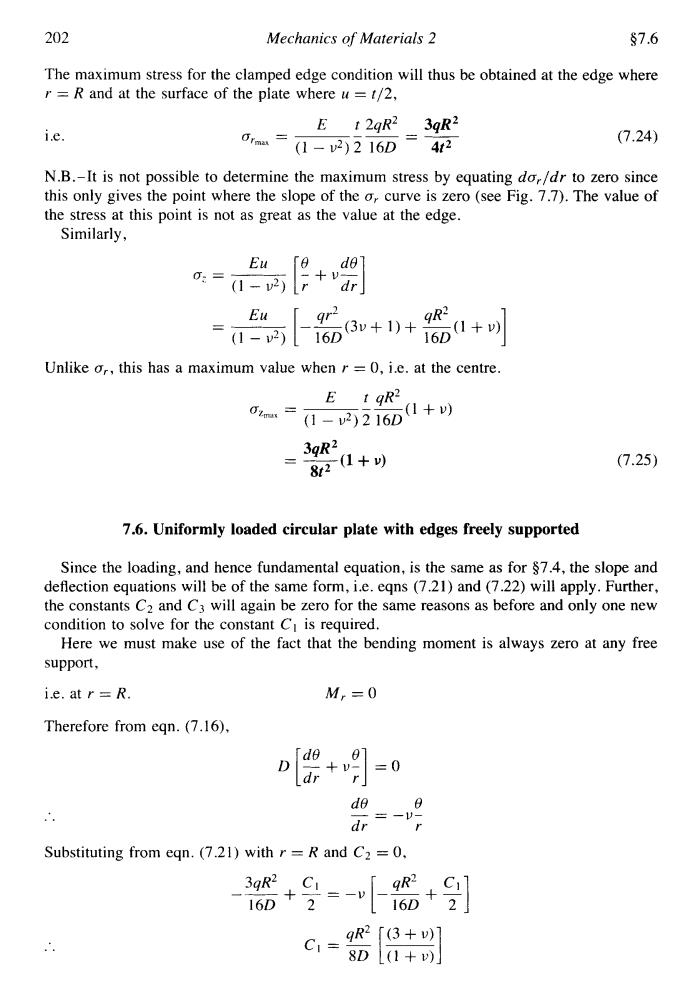正在加载图片...

202 Mechanics of Materials 2 §7.6 The maximum stress for the clamped edge condition will thus be obtained at the edge where r=R and at the surface of the plate where u=t/2, E 12gR2 3gR2 ie. 0rm=Q-)216D42 (7.24) N.B.-It is not possible to determine the maximum stress by equating dor/dr to zero since this only gives the point where the slope of the o,curve is zero(see Fig.7.7).The value of the stress at this point is not as great as the value at the edge. Similarly, Eu de 0:=1 Eu (1-2)16D +1)+ 16D1+ Unlike o,,this has a maximum value when r=0,i.e.at the centre. E 1 gR2 OZm= Γ(1-u2)216D (1+) 821+ (7.25) 7.6.Uniformly loaded circular plate with edges freely supported Since the loading,and hence fundamental equation,is the same as for $7.4,the slope and deflection equations will be of the same form,i.e.eqns (7.21)and(7.22)will apply.Further, the constants C2 and C3 will again be zero for the same reasons as before and only one new condition to solve for the constant Ci is required. Here we must make use of the fact that the bending moment is always zero at any free support, i.e.at r=R. M,=0 Therefore from egn.(7.16), D+=0 「d0.0 de dr Substituting from eqn.(7.21)with r =R and C2=0. 16D CI-9 R2「(3+v) D(1+)202 Mechanics of Materials 2 57.6 The maximum stress for the clamped edge condition will thus be obtained at the edge where r = R and at the surface of the plate where u = t/2, i.e. E t 2qR2 - 3qR2 f,, = - __ (1 - v2)2 160 4t2 (7.24) N.B.-It is not possible to determine the maximum stress by equating dar/dr to zero since this only gives the point where the slope of the a,. curve is zero (see Fig. 7.7). The value of the stress at this point is not as great as the value at the edge. Similarly, .;=---["..$I Eu (1 -v2) r Unlike a,, this has a maximum value when r = 0, i.e. at the centre. E t qR2 (1 - u2)2 160 .zmsx = (1 +VI 4 3qR2 - -(1+ tit2 (7.25) 7.6. Uniformly loaded circular plate with edges freely supported Since the loading, and hence fundamental equation, is the same as for $7.4, the slope and deflection equations will be of the same form, i.e. eqns (7.21) and (7.22) will apply. Further, the constants C2 and C3 will again be zero for the same reasons as before and only one new condition to solve for the constant Cl is required. Here we must make use of the fact that the bending moment is always zero at any free SUPPOfl, i.e. at r = R. M,=O Therefore from eqn. (7.16), .. d8 8 dr r _- -vSubstituting from eqn. (7.21) with r = R and C2 = 0,